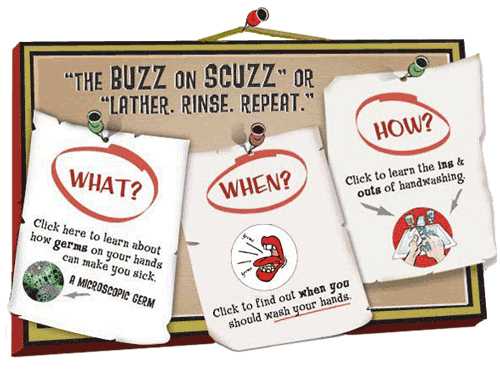Day Care Centers and Schools

Molluscum bumps on a child. Image courtesy Scott Norton MD, MPH, Dept. of Dermatology, Walter Reed Army Medical Center.

The Buzz on Scuzz or Lather. Rinse. Repeat.
There is no reason to keep a child with molluscum infection home from day care or school.
If you notice lesions on a child’s skin, it is reasonable to inform the child’s parents and to request a doctor’s note. Only a healthcare professional can diagnose molluscum contagiosum because there are many other causes of growths on the skin, both infectious and non-infectious.
Lesions not covered by clothing should be covered with a watertight bandage. Change the bandage daily or when obviously soiled.
If a child with lesions in the underwear/diaper area needs assistance going to the bathroom or needs diaper changes, then lesions in this area should be bandaged too if possible.
Covering the lesions will protect other children and adults from getting molluscum and will also keep the child from touching and scratching the lesions, which could spread the infection to other parts of his/her body or cause secondary (bacterial) infections.
Children should be reminded to wash their hands frequently. See "The Buzz on Scuzzon" the CDC's BAM web site for handwashing tips.
If day care or school employees with regular physical contact with others are normally required to have skin examinations during pre-employment physicals, then infection molluscum contagiosum should be noted.
- Page last reviewed: May 11, 2015
- Page last updated: May 11, 2015
- Content Source:


 ShareCompartir
ShareCompartir